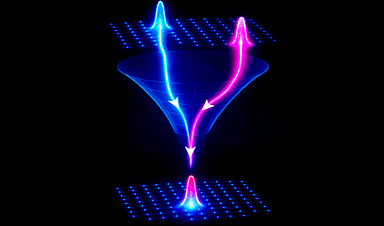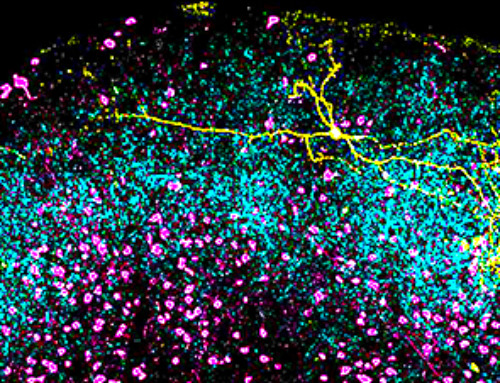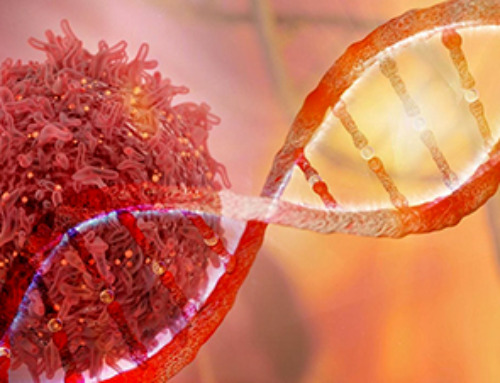Nanoplastics are abundant in the environment and substantially impact public health. However, existing knowledge on the effects of nanoplastics on terrestrial plants is inconsistent. The absence of systematic techniques for assessing these impacts restricts the capacity to generalize from recent findings and creates significant procedural barriers.
A recent study published in the journal ACS Nano tackles this problem by doing a meta-analysis to determine the overall severity of nanoplastic effects on terrestrial plants. The researchers also developed a machine-learning technique for predicting the harmful impacts and driving features of nanoplastic toxicity.
Nanoplastics: Overview and Environmental Impacts
Since the 1950s, around 8.3 billion tons of plastics have been generated, with over 367 million tons generated in 2020 alone. In addition to huge visible trash, plastics in the ecosystem degrade into microplastics and nanoplastics, with distinct environmental impacts.
Nanoplastics differ from microplastics in size, quantity, environmental reactivity, and absorption, and they constitute a bigger, yet unfathomable, danger to the ecosystem and public health.
Soil is a major sink for nanoplastics, and plastic pollution on land exceeds that in the water by several orders of magnitude. However, the majority of studies concentrate on nanoplastics in aquatic settings. Nanoplastics reach soil through the disintegration of bigger plastic-containing objects, sewage-derived landfills, atmospheric exposure, and sewage irrigation.
Despite current scientific attempts to analyze the chemical fingerprints of nanoplastics, the quantity and mass proportion of nanoplastics in soils remain unknown. Moreover, the bulk of earlier nanoplastic research focused only on the negative impacts of nanoplastics on soil animals such as invertebrates, reptiles, and mammals, with few studies concentrating on terrestrial plants.
Effects of Nanoplastics on Terrestrial Plants
Terrestrial plants are those that grow on land. Terrestrial plants are separated into two parts: the root system and the shoot system. The root system is made up of roots that take nutrients from the ground and store them. On the other hand, the shoot system is made up of stems and leaves that transport chemicals up and down the plant.
Terrestrial plants have an important role in the functioning of the ecosystem and in delivering crucial ecological services such as food and nutrition security.
Some data on nanoplastics has already been generated from individual empirical studies. This data includes physicochemical parameters of nanoplastics such as size and interface chemistry, plant factors like species and developmental stages, and experimental settings such as exposure environment and duration.
However, the results from individual studies are often conflicting, leading to uncertainty and heterogeneity in the corpus of nanotoxicology publications. Therefore, integrating quantitative and qualitative data from a wide range of publications for risk analysis and evidence-based regulatory precautions is a crucial task.
What Did the Researchers Do in This Study?
The primary goal of this research was to fill this information gap by combining a meta-analysis with a machine-learning technique from the complete corpus of nanoplastic publications. The researchers hypothesized that a systematic study could accelerate the growth of nanoplastic risk analysis and create successful regulatory policies in the future.
Meta-analysis can measure the amount (rather than just the presence) of nanoplastics’ effects on terrestrial plants and discover causes of variation in statistical data. The machine-learning technique enables the creation of quantitative forecasting models based on complex algorithms.
The combined meta-analysis and machine learning methodologies have been employed in a variety of industries, including nanotechnology, agriculture, and healthcare. These approaches can aid in discovering previously unknown correlations between quantum dot characteristics, cytotoxicity, and reliable signature genes, improving diagnostic and treatment tactics.
Key Developments of the Research
The integrated meta-analysis and machine learning approaches were utilized effectively to compile and classify nanoplastic cytotoxic effects from nanotoxicology research. The researchers reported that nanoplastics have profound impacts on terrestrial plants. Still, the magnitudes and variety of these effects are dependent on toxicity measures, plant features, nanoplastic properties, and exposure settings.
These findings show that the dangers of nanoplastics depend on various responses from molecular to ecological sizes. These responses are based on the spatial and functional intricacies of nanoplastics and, as such, are unique to both plastic properties and environmental circumstances.
In this regard, future research should describe and reflect on the key driving factors of nanoplastic effects on terrestrial plants.
Based on the outcomes of this research, it is reasonable to conclude that the combined meta-analysis and machine learning strategy can pave the way for a universal mitigation solution by optimizing key driving factors of nanoplastic toxicity.
News
Lipid nanoparticles discovered that can deliver mRNA directly into heart muscle cells
Cardiovascular disease continues to be the leading cause of death worldwide. But advances in heart-failure therapeutics have stalled, largely due to the difficulty of delivering treatments at the cellular level. Now, a UC Berkeley-led [...]
The basic mechanisms of visual attention emerged over 500 million years ago, study suggests
The brain does not need its sophisticated cortex to interpret the visual world. A new study published in PLOS Biology demonstrates that a much older structure, the superior colliculus, contains the necessary circuitry to perform the [...]
AI Is Overheating. This New Technology Could Be the Fix
Engineers have developed a passive evaporative cooling membrane that dramatically improves heat removal for electronics and data centers Engineers at the University of California San Diego have created an innovative cooling system designed to greatly enhance [...]
New nanomedicine wipes out leukemia in animal study
In a promising advance for cancer treatment, Northwestern University scientists have re-engineered the molecular structure of a common chemotherapy drug, making it dramatically more soluble and effective and less toxic. In the new study, [...]
Mystery Solved: Scientists Find Cause for Unexplained, Deadly Diseases
A study reveals that a protein called RPA is essential for maintaining chromosome stability by stimulating telomerase. New findings from the University of Wisconsin-Madison suggest that problems with a key protein that helps preserve chromosome stability [...]
Nanotech Blocks Infection and Speed Up Chronic Wound Recovery
A new nanotech-based formulation using quercetin and omega-3 fatty acids shows promise in halting bacterial biofilms and boosting skin cell repair. Scientists have developed a nanotechnology-based treatment to fight bacterial biofilms in wound infections. The [...]
Researchers propose five key questions for effective adoption of AI in clinical practice
While Artificial Intelligence (AI) can be a powerful tool that physicians can use to help diagnose their patients and has great potential to improve accuracy, efficiency and patient safety, it has its drawbacks. It [...]
Advancements and clinical translation of intelligent nanodrugs for breast cancer treatment
A comprehensive review in "Biofunct. Mater." meticulously details the most recent advancements and clinical translation of intelligent nanodrugs for breast cancer treatment. This paper presents an exhaustive overview of subtype-specific nanostrategies, the clinical benefits [...]
It’s Not “All in Your Head”: Scientists Develop Revolutionary Blood Test for Chronic Fatigue Syndrome
A 96% accurate blood test for ME/CFS could transform diagnosis and pave the way for future long COVID detection. Researchers from the University of East Anglia and Oxford Biodynamics have created a highly accurate [...]
How Far Can the Body Go? Scientists Find the Ultimate Limit of Human Endurance
Even the most elite endurance athletes can’t outrun biology. A new study finds that humans hit a metabolic ceiling at about 2.5 times their resting energy burn. When ultra-runners take on races that last [...]
World’s Rivers “Overdosing” on Human Antibiotics, Study Finds
Researchers estimate that approximately 8,500 tons of antibiotics enter river systems each year after passing through the human body and wastewater treatment processes. Rivers spanning millions of kilometers across the globe are contaminated with [...]
Yale Scientists Solve a Century-Old Brain Wave Mystery
Yale scientists traced gamma brain waves to thalamus-cortex interactions. The discovery could reveal how brain rhythms shape perception and disease. For more than a century, scientists have observed rhythmic waves of synchronized neuronal activity [...]
Can introducing peanuts early prevent allergies? Real-world data confirms it helps
New evidence from a large U.S. primary care network shows that early peanut introduction, endorsed in 2015 and 2017 guidelines, was followed by a marked decline in clinician-diagnosed peanut and overall food allergies among [...]
Nanoparticle blueprints reveal path to smarter medicines
Lipid nanoparticles (LNPs) are the delivery vehicles of modern medicine, carrying cancer drugs, gene therapies and vaccines into cells. Until recently, many scientists assumed that all LNPs followed more or less the same blueprint, [...]
How nanomedicine and AI are teaming up to tackle neurodegenerative diseases
When I first realized the scale of the challenge posed by neurodegenerative diseases, such as Alzheimer's, Parkinson's disease and amyotrophic lateral sclerosis (ALS), I felt simultaneously humbled and motivated. These disorders are not caused [...]
Self-Organizing Light Could Transform Computing and Communications
USC engineers have demonstrated a new kind of optical device that lets light organize its own route using the principles of thermodynamics. Instead of relying on switches or digital control, the light finds its own [...]





















